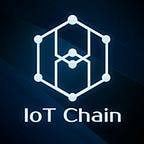IoT Chain Test Network Officially Released on October 31, 2018
IoT Chain Test Network Officially Released on October 31, 2018
The release of the IoT Chain public test network not only means that the research and development of the IoT chain project has entered a new stage, but also marks the beginning of the scale of the IoT network ecosystem. So, what exactly does the IoT Chain public test network achieve? How can I participate in the testing? The answers will be given one by one below.
After a few months of intense development, today we would like to talk to you about the IoT Chain test net. We have made great progress on our technical development, and we’re very excited to share with you our achievements. I will introduce our current work and show how developers can deploy decentralized applications (DApps) in IoT Chain.
So far, we have developed Byzantine fault tolerance (BFT) consensus, desktop wallet, block chain browser, and thanks to help from our community members a mobile wallet that supports different languages.
A DApp is based on smart contracts, which can bring the advantages of being non-tamperable and supporting multi-party trust. That is the most valuable place in the blockchain. Next, let’s look at how to deploy a DApp in IoT Chain. You will find it very easy to deploy smart contracts in the IoT Chain.
We welcome and encourage community members and blockchain technology enthusiasts to actively participate in the testing and provide valuable advice to the team to build a secure and scalable public network for IoT Chain.
Info on the functions of the public test network:
1.Implementation of BFT-based consensus
The optimized BFT consensus algorithm can satisfy Byzantine fault tolerance and support a flexible consensus engine architecture.
2. Implementation of multi-node P2P secure communication
Realize the discovery and maintenance of network nodes, support the broadcasting and synchronization of blocks and transaction information; implement secure communication protocols and support node environment monitoring.
3. Support for EVM (Ethereum Virtual Machine) Smart Contracts
Developers can easily write the secure smart contracts using solidity or other languages, including compiling, publishing, executing, and more.
4. Implementation of a Blockchain Browser
Users can query transaction information or contract execution records through the blockchain browser.
5. Support for desktop wallet
Support wallet transactions, calling contracts, built-in blockchain browser; access to IoT Chain test network.
6. Support for mobile wallet
Support wallet transactions, Ethereum network access, IoT Chain test network access.
Noted: Based on the stability test Blockchain browser will release 7th November.
Next coming updates,
1.Technology R&D Promotion
Continue to integrate Verifiable Random Function (VRF) to optimize performance.
2. Developer Ecology
Mainstream platforms, SDK development for applications, more detailed development documentation, etc.
3. Mainnet preparation
Preparation tasks before the mainnet launch
If you have any suggestions during the testing process, please submit an issue at GitHub ub https://github.com/c-block/jbok
